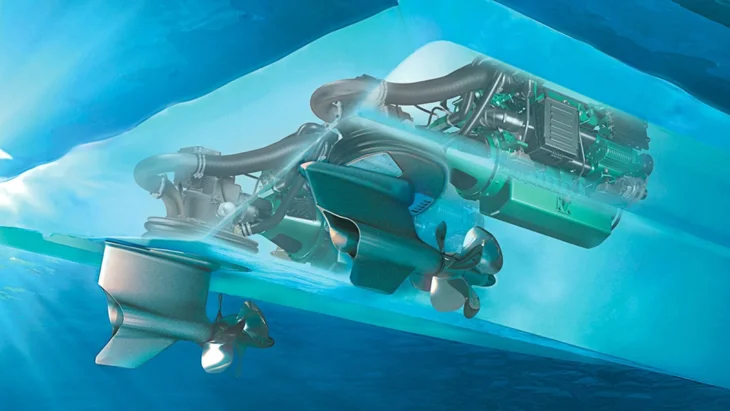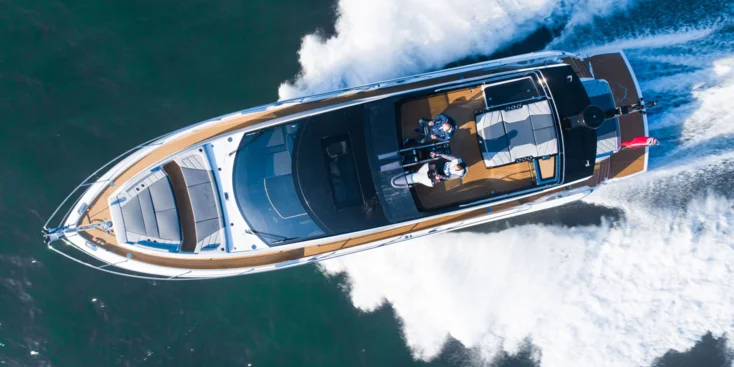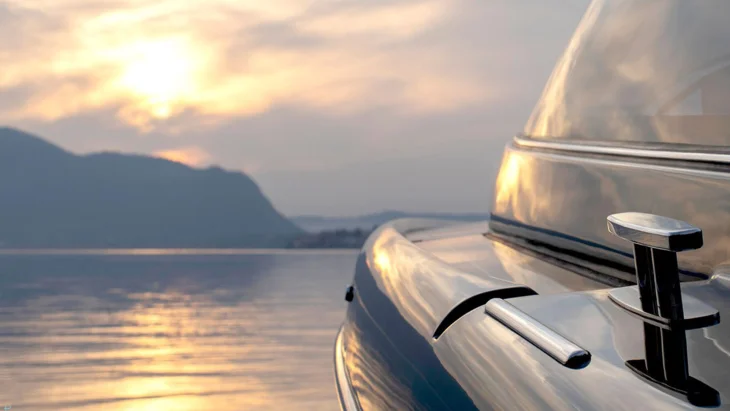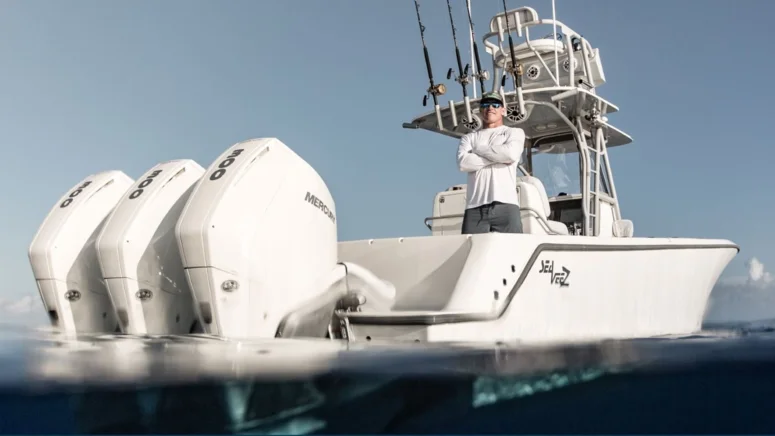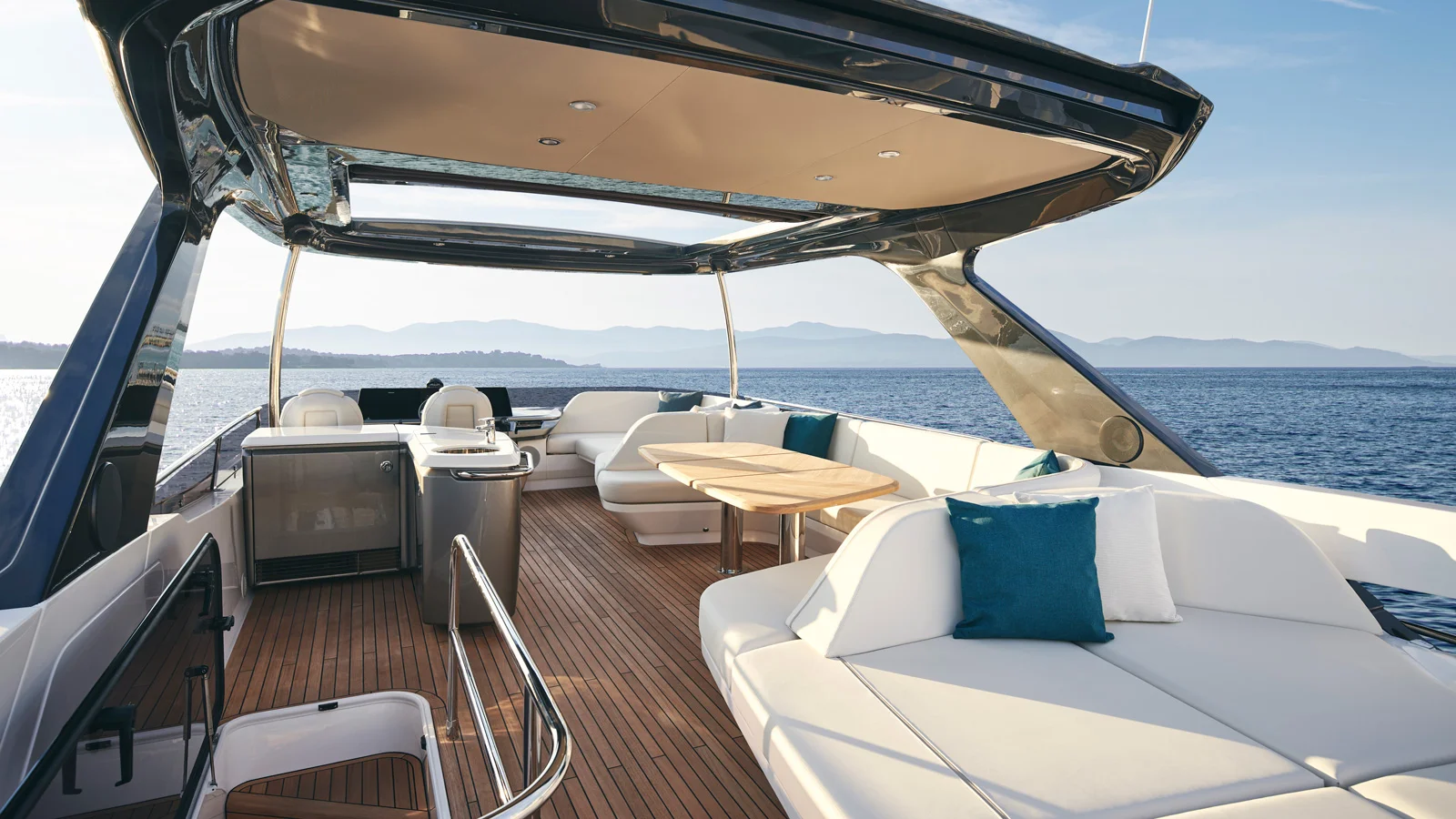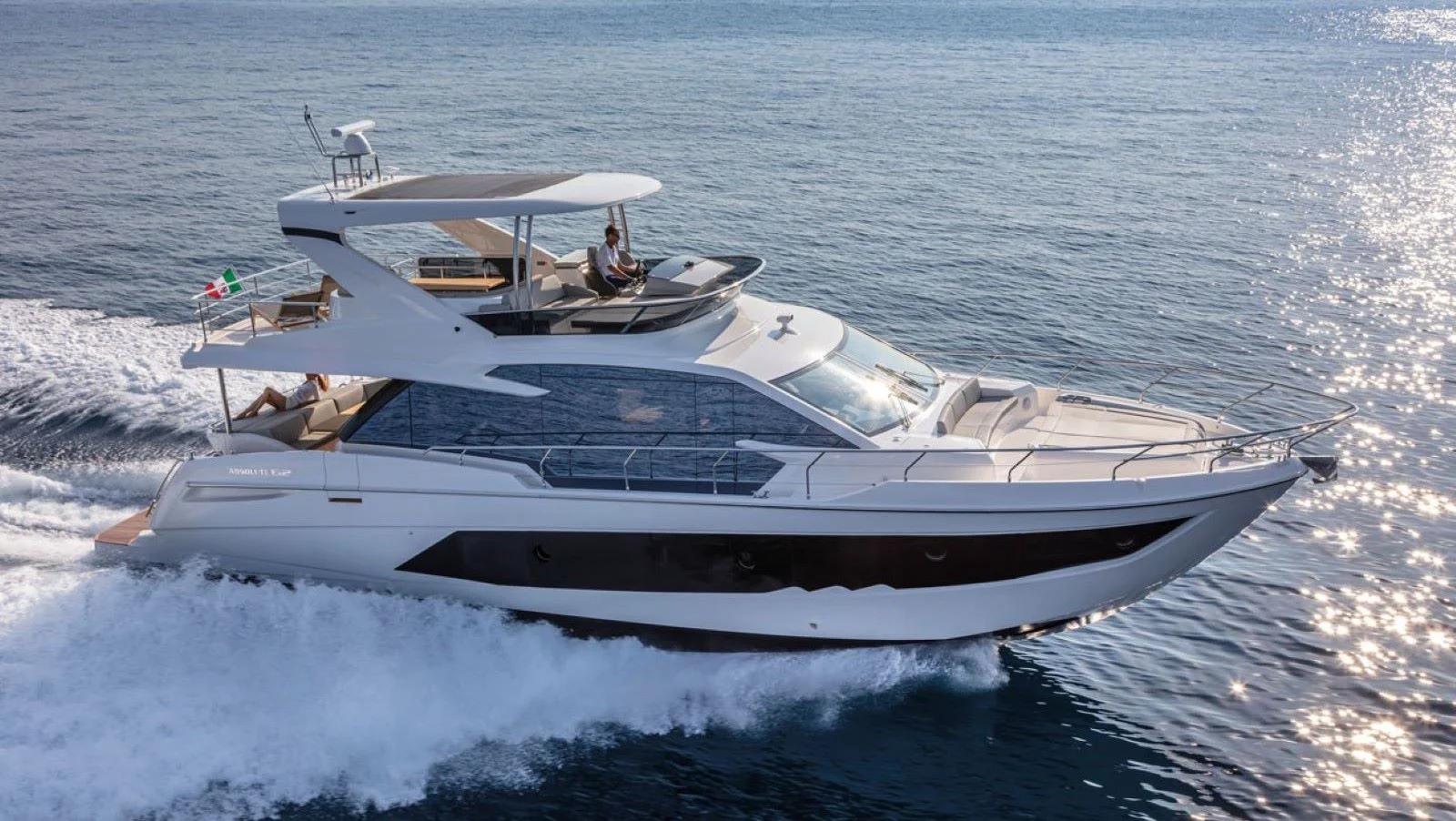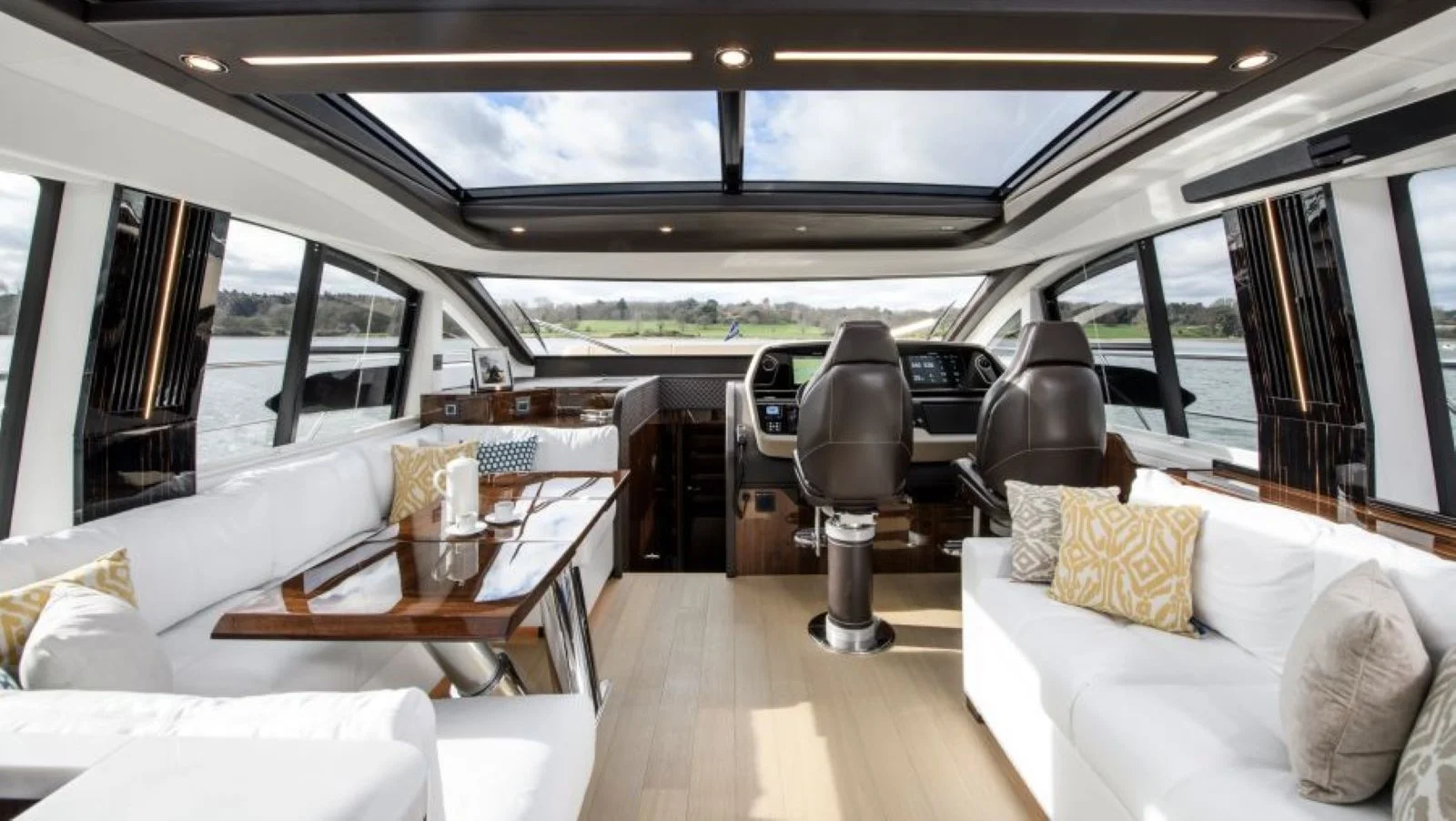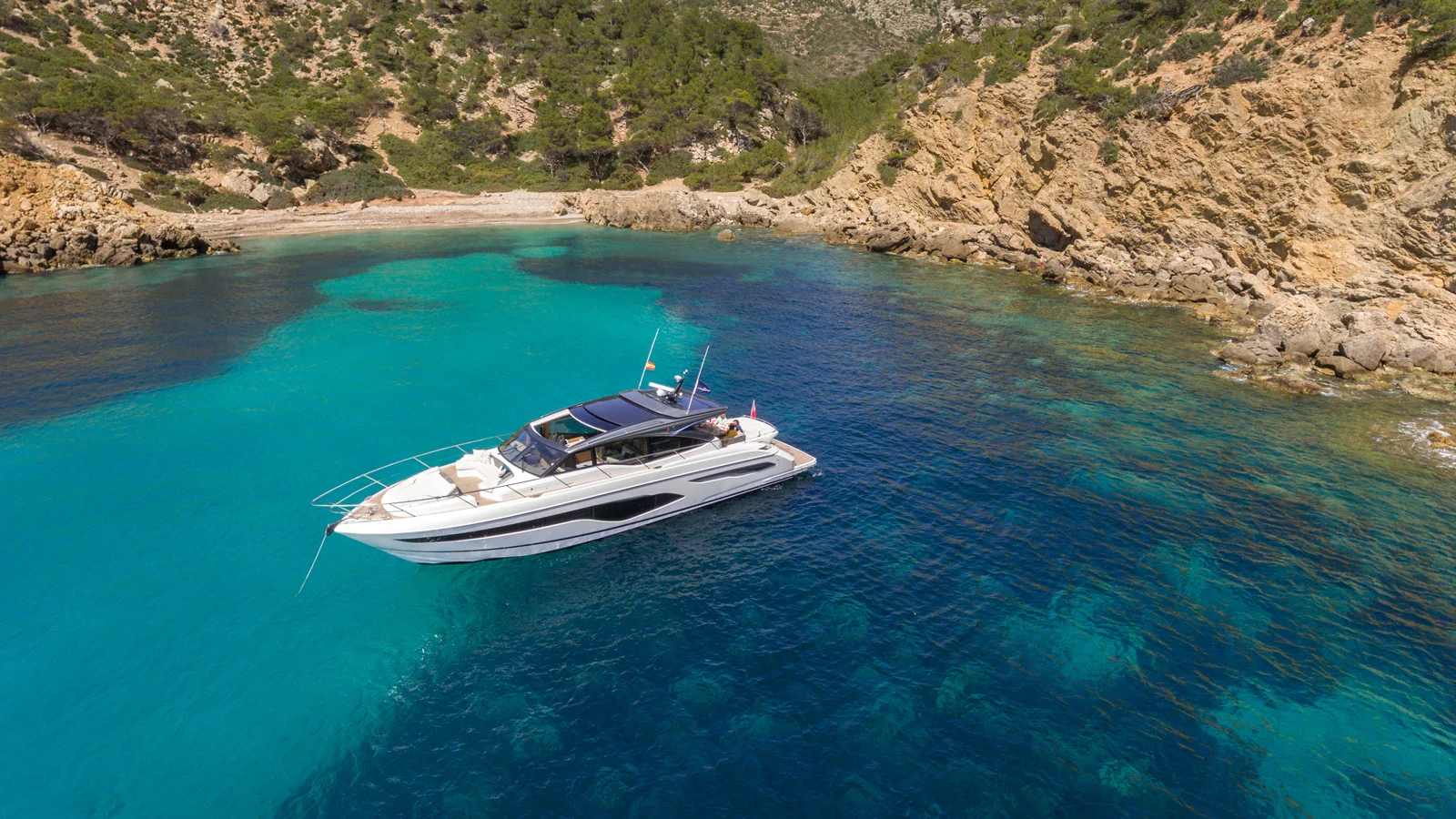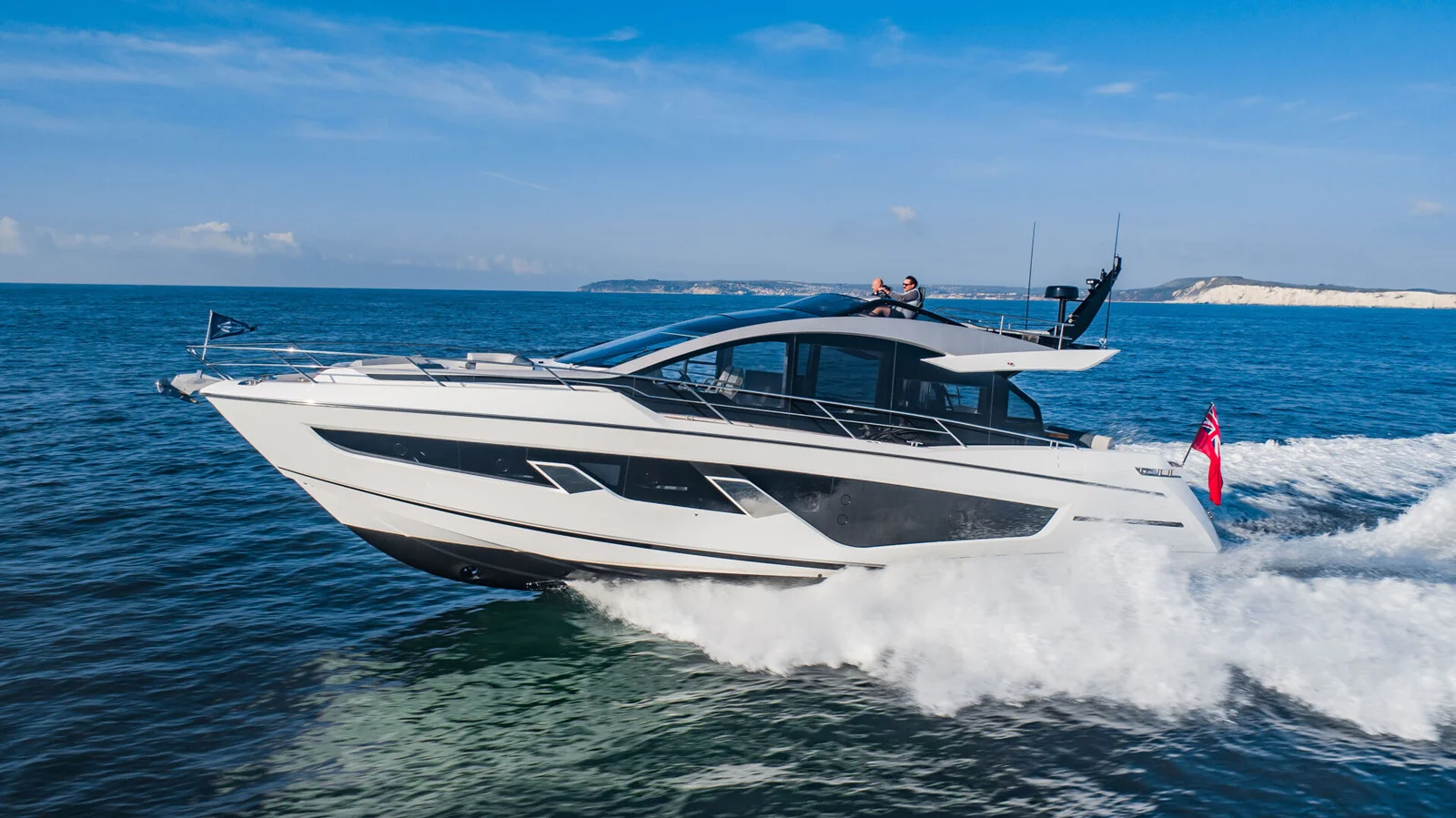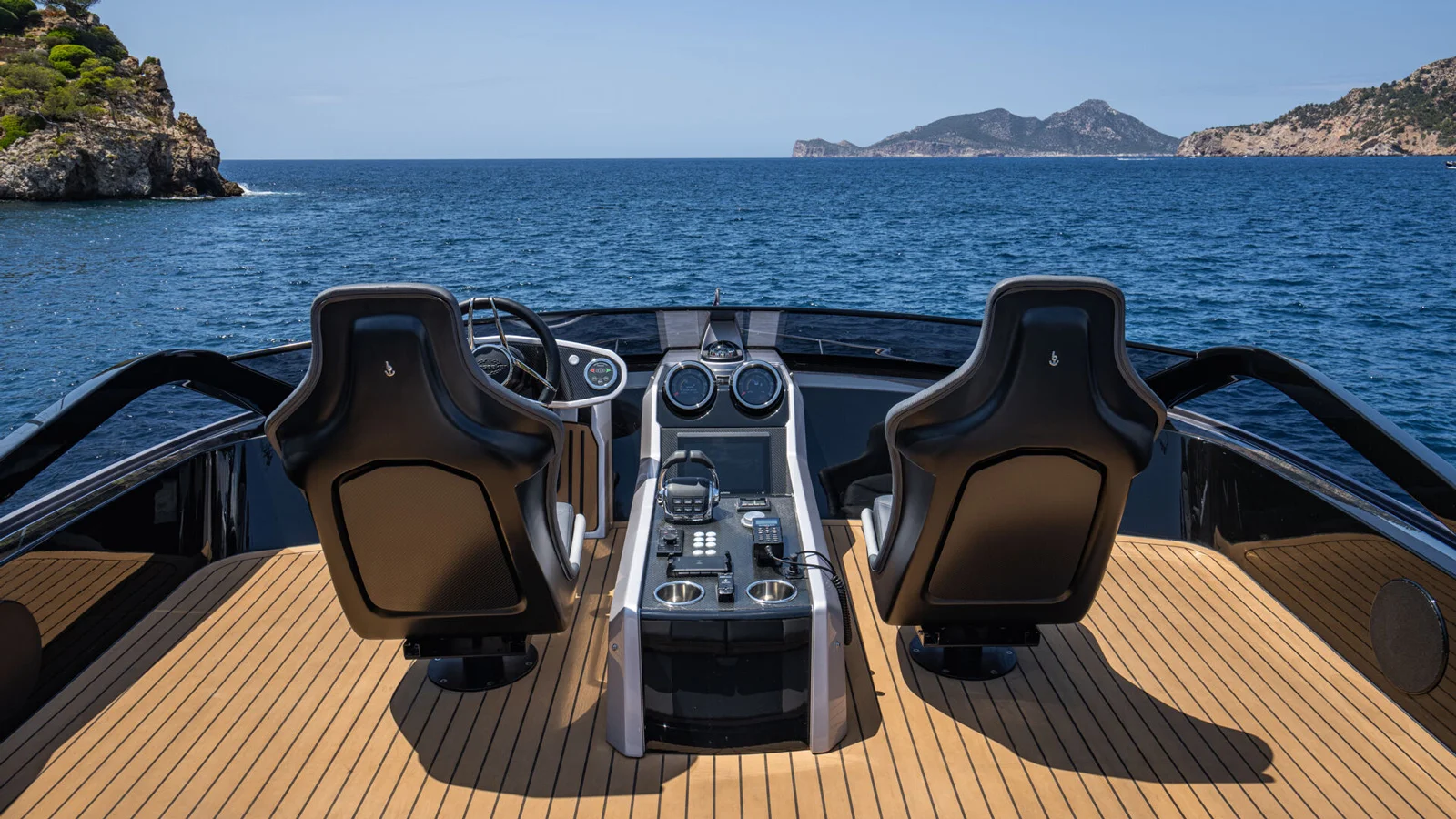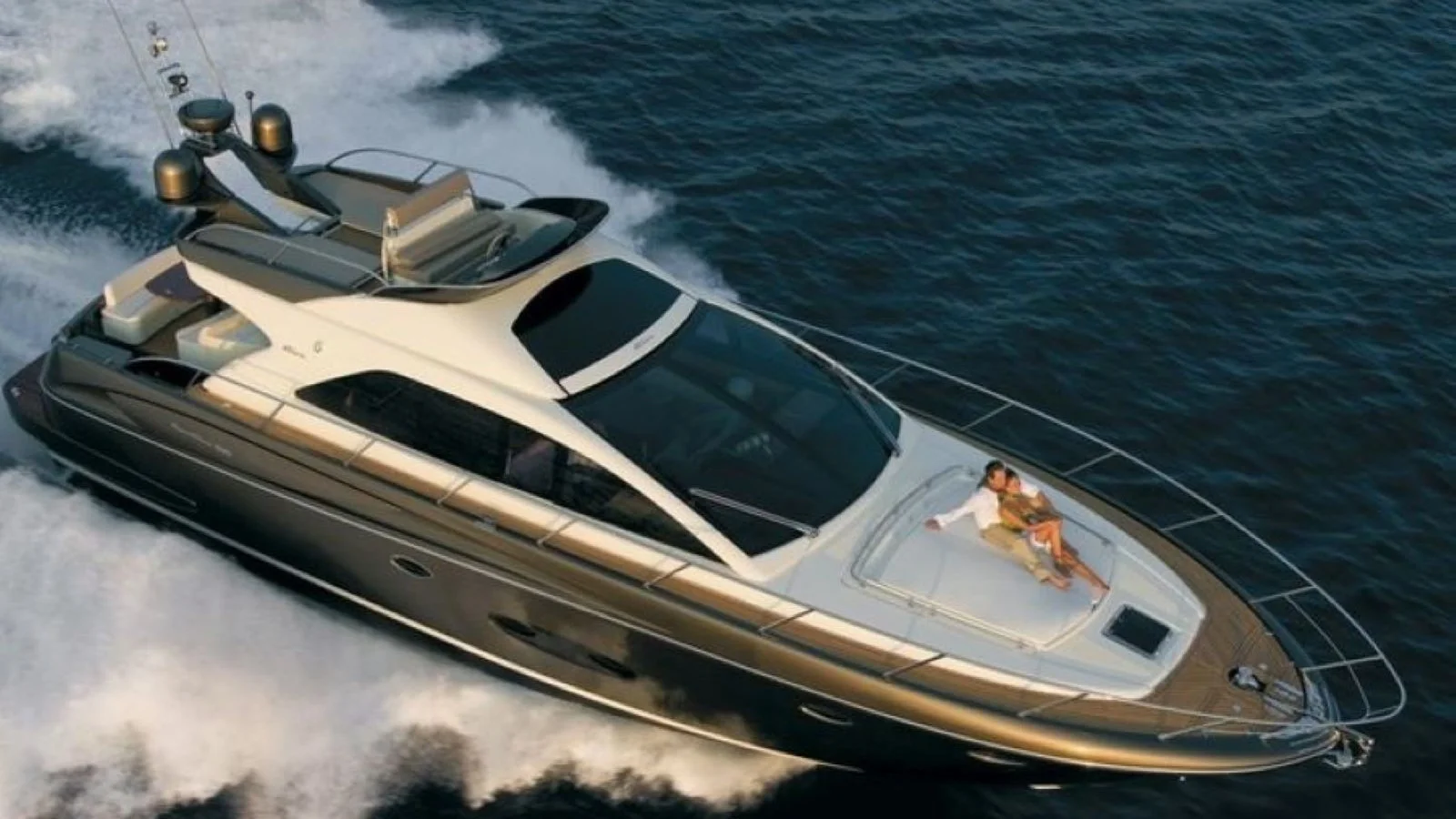Sportbridge: design features and nuances of a sport flybridge
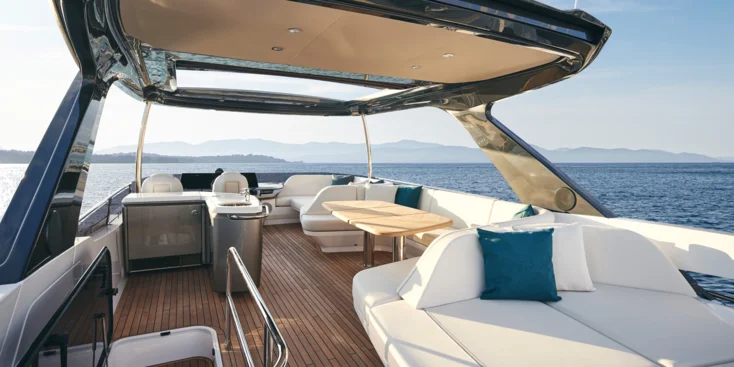
A sportbridge is a type of superstructure that unites the functions and the benefits of sport and flybridge yachts
About ten to fifteen years ago this kind of hybrids were a rare thing, but with time sportbridges gained popularity and became a class of their own, widely presented in the ranges of most of the world’s top shipyards.
Flybridge: benefits and drawbacks
Having a flybridge is hard to overestimate. It is an open upper deck of a midsize yacht, housing an extra helm station and a lounge. The second “floor” provides a lot of extra space on board, and it is open-air. One can sunbathe, relax in a jacuzzi or have a barbecue with quite a large group of friends. The upper helm station is not just convenient, but sometimes necessary due to a better visibility at the top. It’s not for nothing that flybridge models are the most sought-after type of motor yachts.

The downside is that flybridges make the yacht taller, heavier and, as a consequence, not so fast and tightly maneuverable as sport models. In the areas with a lot of low bridges one should keep the bridge clearance in mind. No matter how stupid it might seem, all over the world flybridge yachts get stuck under bridges on a ridiculously regular basis.

All of this is not even a downside, but more of inherent attributes of this class. If you draw a parallel with the automotive world, a flybridge is like a van that can accommodate a lot of people. But you are unlikely to take it to a racing track or expect that it will have a superaerodynamic profile.
Sport yachts: benefits and drawbacks
Now let’s have a look at sport yachts. Their sleek, low profile and flowing lines remind one of sport cars. And there is no second “floor” here! There is a hardtop instead: a hard powered roof, which can open turning the yacht into a cabriolet.
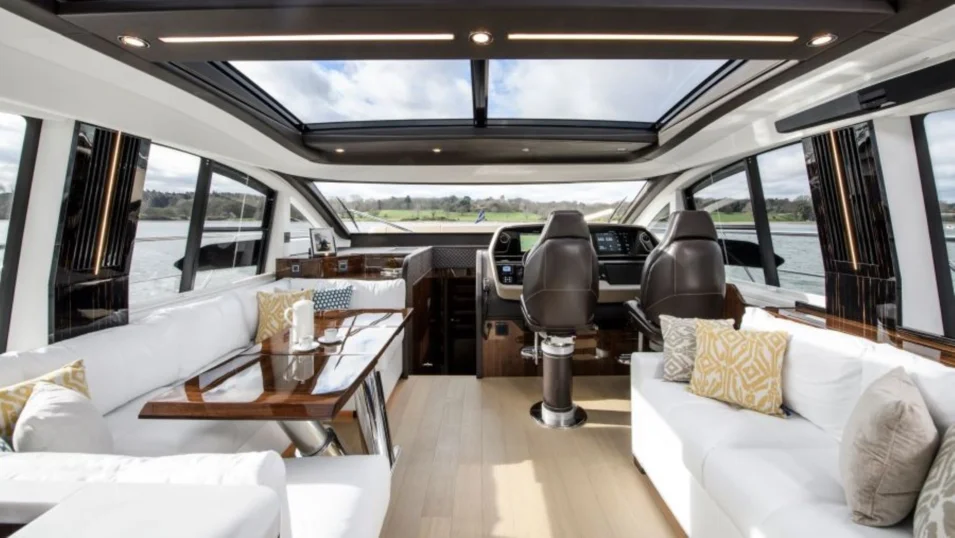
In addition to a fancy look, as a rule, sport yachts can boast excellent dynamic characteristics. In case a shipyard manufactures a sport and a flybridge model on the basis of one hull, the former will be faster and more maneuverable even if they are powered by the same engines, because she is lighter and has better aerodynamics. At the same time, the sport version will be a little cheaper. And, surely, there is no need to worry about the bridge clearance. The drawbacks are quite obvious here, too: the only areas where you can relax in the sun on board a sport yacht are the aft cockpit and the foredeck.
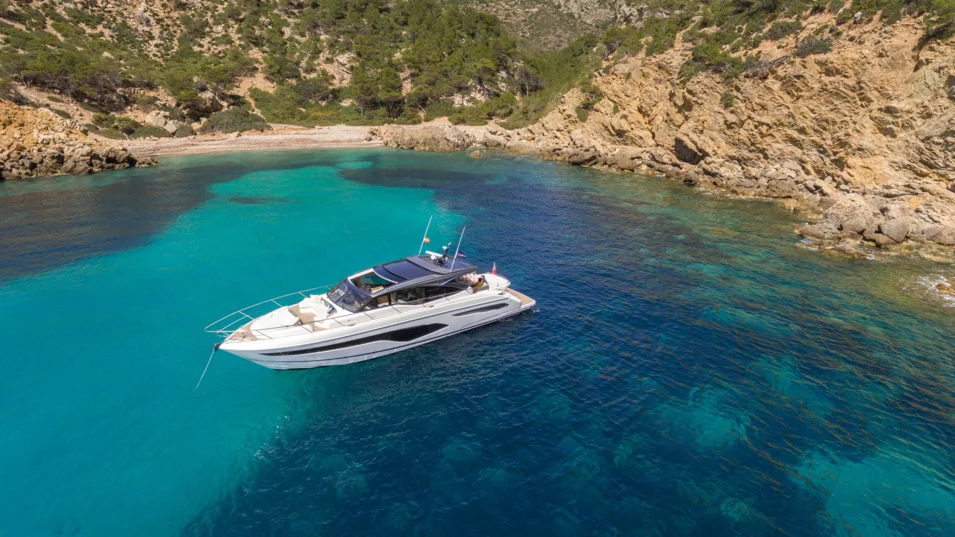
But what if you want it all in one? A flybridge, an aerodynamic profile, a second helm and, finally, an opportunity to open a sunroof over the saloon? In a car world one of the solutions would be to buy two cars, but there are not many people who can afford to have two yachts. And that is how a sportbridge came into being…
Sportbridge: a little compromise and a lot of opportunities
Looking at the profile of an ordinary flybridge yacht, one can notice that a flybridge normally starts after the first third of the hull, so it covers the main deck saloon almost completely.
The sportbridge is brought aft a lot more, which allows for an open sunroof over the front part of the saloon, housing the helm station. It will surely not be as large as the one on sport yachts, where you can open almost all of the saloon, but to many owners it is important to have an opportunity to let the light and the wind into the main deck.

As it is shifted toward aft, a sportbridge naturally can’t be the same size as a flybridge of a yacht of a similar size. It is smaller, but, depending on the size of the yacht, it can accommodate a helm station and a sunpad, as well as everything that we are used to seeing on an ordinary flybridge: a dining area, a bar, etc.
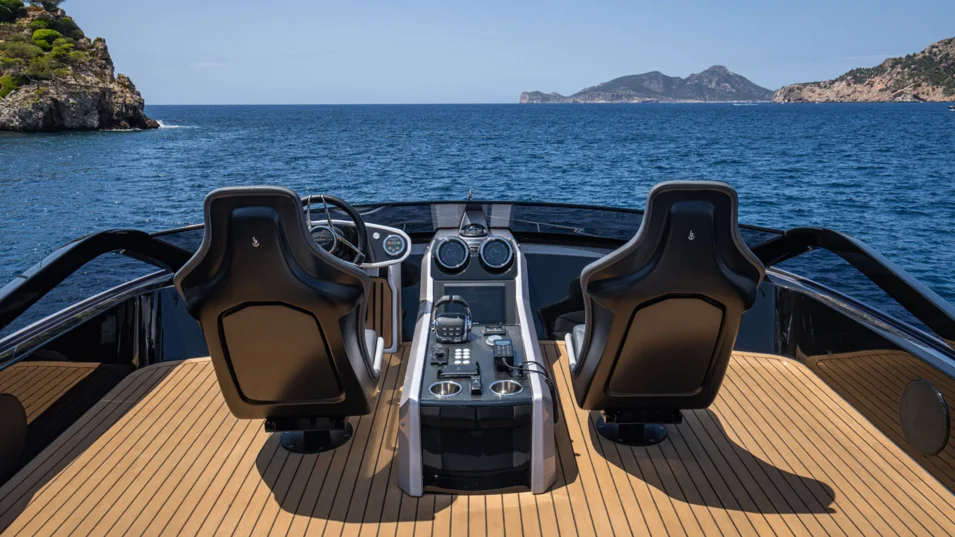
The pioneer of this class was the 56 Sportriva, built in 2008, and she remained one of a kind for quite a long time. Now there is abundance of sportbridge yachts on the market, manufactured by Sunseeker, Princess, Riva, Azimut and many other yards. One should note that over the years yacht designers managed to improve the sportbridge considerably, making it more spacious and ergonomic.

It is largely achieved due to the fact that the sportbridge is a little “sunk” in the superstructure. Sometimes, when you look at a yacht’s profile, it is even hard to guess she has a sportbridge, because it’s been integrated into her sport lines so well. Thus, the popularity of this class is quite easy to explain: you get an extra recreation area at the top (albeit not very large), a second helm station and you don’t have to sacrifice the sporty looks of the boat at the same time.
You have successfully subscribed to our newsletter
